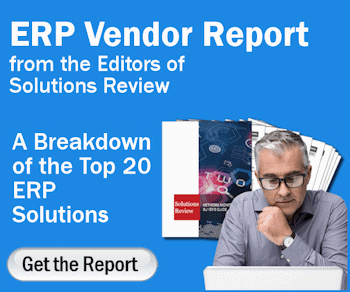Supply Chain Disruption 2025: A Perfect Storm Looms


Steve Bassaw, a Product Manager at SYSPRO Americas, shares his expertise on the potential supply chain disruption that could arrive in 2025. This article originally appeared in Insight Jam, an enterprise IT community that enables human conversation on AI.
 Just as global supply chains have finally recovered from the unprecedented disruption caused by the COVID-19 pandemic, new threats are emerging that could destabilize the delicate balance once again. Three major forces—potential trade wars, climate change, and geopolitical conflicts—are converging to create what experts warn could be a perfect storm for supply chain managers in 2025.
Just as global supply chains have finally recovered from the unprecedented disruption caused by the COVID-19 pandemic, new threats are emerging that could destabilize the delicate balance once again. Three major forces—potential trade wars, climate change, and geopolitical conflicts—are converging to create what experts warn could be a perfect storm for supply chain managers in 2025.
The most immediate concern stems from the possibility of increased tariffs. All tariffs will have a significant impact, but the ones that would have the greatest effect would be on imported goods from Canada and Mexico. These are America’s largest trading partners and North American supply chains have become deeply integrated since the US-Canada-Mexico Agreement (USCMA) eliminated most trade restrictions in 2020. Many products cross borders multiple times during manufacturing, compounding the tariff effect at each crossing. This could lead manufacturers to completely reassess their operations, potentially relocating facilities and finding new suppliers within their target markets.
Climate change presents another significant challenge. Recent events like Hurricane Helene have demonstrated how extreme weather can severely impact critical supply chain nodes. When the hurricane hit North Carolina, it temporarily shut down mining operations in Spruce Pine, disrupting the global supply of high-purity quartz essential for chip manufacturing.
Wildfires are increasingly affecting regions previously unaccustomed to them, such as northeastern North America, causing transportation disruptions and air quality issues that impact logistics operations. Rising temperatures are also shifting agricultural zones, with significant implications for food manufacturing supply chains.
Adding to these concerns is the volatile geopolitical landscape. Ongoing conflicts and tensions in multiple regions threaten to disrupt crucial shipping routes and access to raw materials. The potential realignment of longstanding international alliances could further complicate global trade relationships, requiring supply chain managers to develop new contingency plans and alternative routing strategies.
The complexity of managing these multiple threats simultaneously pushes supply chain operations beyond what can be effectively managed through traditional methods. As a result, artificial intelligence and advanced analytics are quickly transitioning from optional tools to essential capabilities for supply chain management. AI enables supply chain managers to handle multi-sourcing strategies effectively, run sophisticated what-if scenarios, and make accurate predictions about supplier performance. These capabilities will be crucial for maintaining operational resilience in an increasingly unpredictable environment.
Organizations that recognize and adapt to these challenges by investing in robust technology solutions and developing flexible supply chain strategies will likely gain significant competitive advantages. Those who don’t may struggle to maintain operations as disruptions become more frequent and severe.
The key to survival in this new environment will be building supply chains that quickly adapt to changing circumstances. This means leadership must:
- Develop multiple sourcing options for critical materials and components.
- Create flexible manufacturing and distribution networks that can quickly pivot when disruptions occur.
- Implement advanced technology solutions that can predict and respond to potential disruptions before they cause a significant impact.
- Maintain strong relationships with suppliers across different regions to ensure backup options are available.
As we move toward 2025, it’s clear that the supply chain landscape will become increasingly complex. Success will depend on organizations’ ability to anticipate and respond to disruptions quickly and effectively. Those who invest in the right technologies and strategies now will be best positioned to navigate the challenges ahead, while those who maintain a business-as-usual approach may find themselves at a significant disadvantage in this new era of constant supply chain disruption.






















